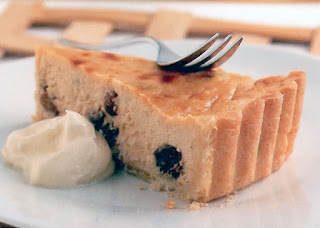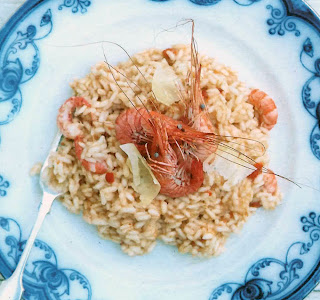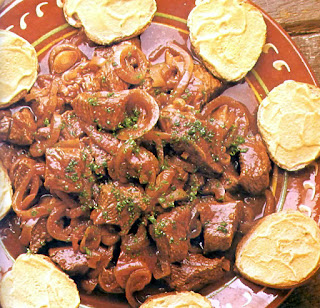As today is February 28th, tomorrow will be March 1st, St David's Day. To celebrate, throughout the day today I will be posting various traditional Welsh recipes that can be put together to make a St David's day meal. There will be two starters, two main courses, a dessert and Welsh Cakes.
As the day progresses, all the recipes will be linked together so that you can find them here, all in one place.
For any traditional St David's day meal, you have to start with Cawl Cig Oen (or just 'cawl' as it is often known); a hearty broth of lamb and root vegetables.
Though easy to make, this broth is so traditional and so commonly served at St David's day festivities that I absolutely had to provide a recipe for it. Though I do also give an alternative starter here for the more adventurous.
Cawl
Serves: 6
Cawl is the Welsh word for a 'soup' or a 'broth'. Often it can be served as a hearty meal in and of itself. Typically on St David's day, either
cawl cennin (leek soup) or simply 'cawl' (a hearty broth of lamb, potatoes and vegetables) is served.
Traditionally, breast of lamb was used (but I find this far too fatty for this dish). Personally I like to cook a neck of lamb to give the rustic feel (and a richer stock) for the broth, but this recipe has been adapted to modern tastes with the use of diced lamb.
Today I present the recipe for the lamb broth.
Ingredients:
700g (1 2/3 lbs) lamb finely diced
700g (1 2/3 lbs) potatoes, finely diced
225g (1/2 lb) carrots, thinly sliced
225g (1/2 lb) swede, thinly sliced
225g (1/2 lb) turnips, thinly sliced
1/2 Savoy cabbage, shredded
2 leeks, finely chopped
1 onion, finely chopped
2.2l (9 cups) water
4 tbsp
parsley, finely chopped
salt and freshly-ground black pepper to taste
Method:
Heat a frying pan and brown the meat in this, discarding any fat that is released.
Meanwhile, bring the water to a boil in a large stock pot and add the meat. Boil for half an hour then add the root vegetables and onion. Turn the heat to a simmer and cook for two hours. At this point, add the remaining vegetables and season.
Cook for a further 30 minutes then serve immediately, ladled into warmed soup bowls. Add a handful of chopped parsley on top of each bowl of
cawl.
This recipe is adapted, with permission, from the
Celtnet cawl (lamb soup) recipe page, where you can find the recipe in both Welsh and English as part of the site's
Cymric (Welsh) recipes collection and their
traditional St David's day recipes page.
Below you will find links to all the recipes on this blog that go together to make a St David's day meal:
Starters:
Cawl (Lamb and Vegetable Broth)
Risotto of Celtic Crab and Cardigan Bay Prawns
Main Courses:
Rustic Lamb Shoulder Roast
Salmon Baked with Potatoes and Thyme
Accompaniments:
Creamed Leeks
Desserts:
Pwdin Eryri (Snowdonia Pudding)
Other Dishes:
Welsh Cakes (Pice ar y Maen)
UPDATE! My Big Book of Soup recipes has just been published for Amazon Kindle!
This is the largest eBook of soup recipes ever assembled. With over 1000 soup recipes divided into all the classic soup types.
In addition you get a chapter on the history of soups, with example historic recipes from the stone age right up to the 1880s. Indeed, in the historic chapter there are soup recipes from the stone age, medieval period, Tudor period, Stuart Period, Georgian period and Victorian period, over 160 authentic historic soups covering the entire history of soup making in Europe.
You also get chapters on African soups and Oriental soups, covering the soups of the entire continent of Africa as well as east and southeast Asia (Indian soups are dealt with in a chapter on Curried soups.
There are also chapters on the classic soups, like cream soups, chowders, vegetarian soups, vegetable soups, meat soups, fish and seafood soups, chicken soups, winter warmers and spring soups. In addition you get chapters on more unusual soups like fruit soups and chilled soups. The book is also dotted with recipes for wild food based soups, which are easily accessible from the index.
Every classic and traditional soup type is dealt with in this ebook! Get you copy today and help this blog and the
Celtnet Recipes website keep going.































